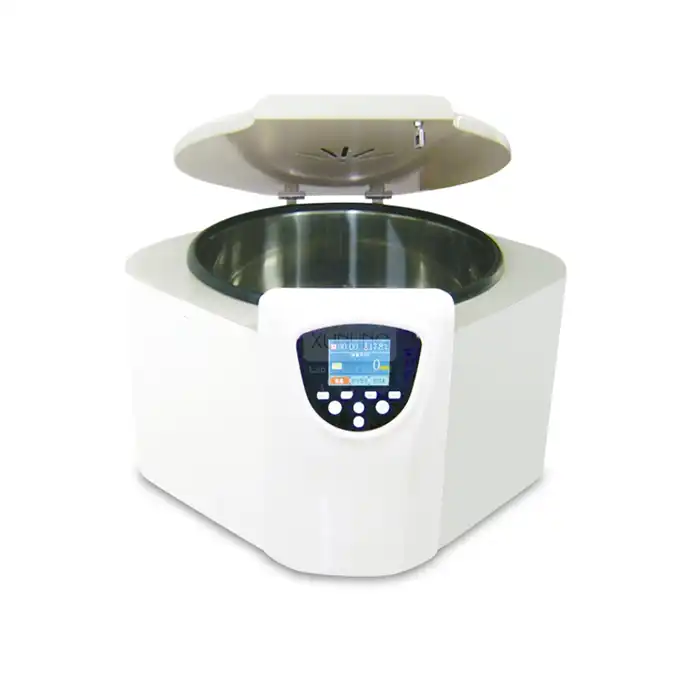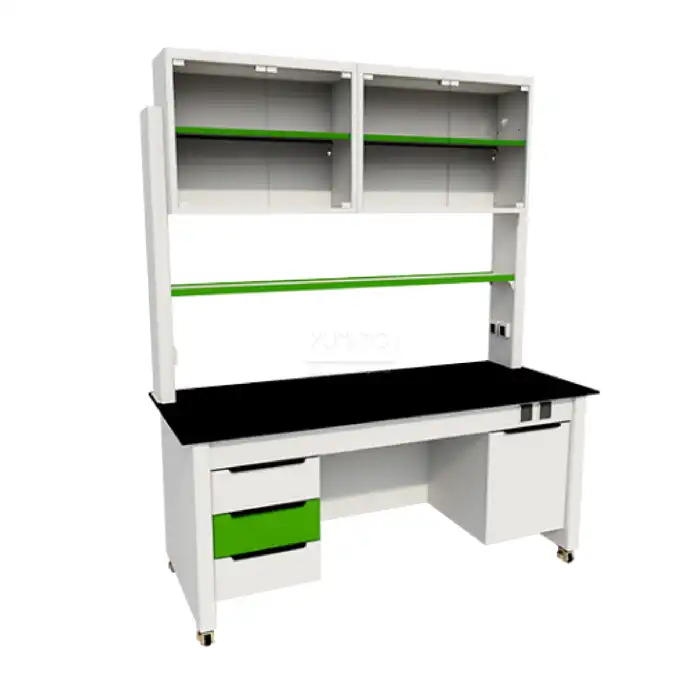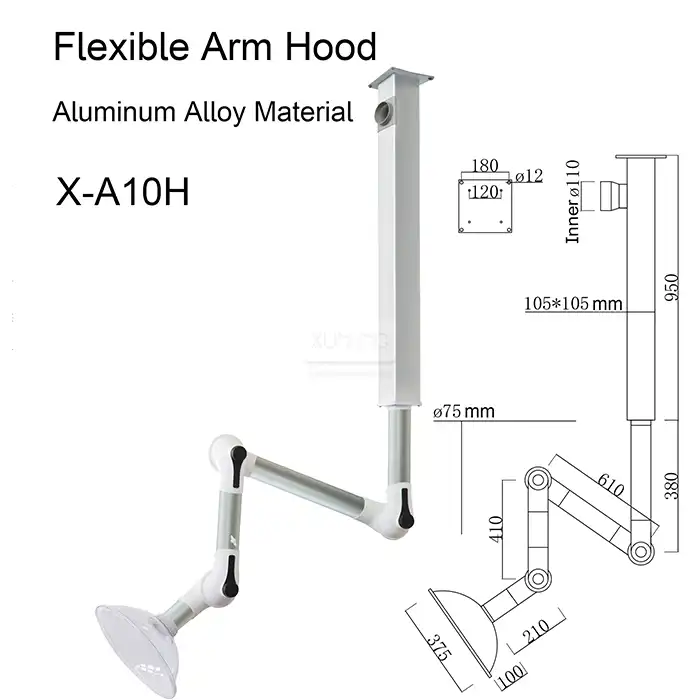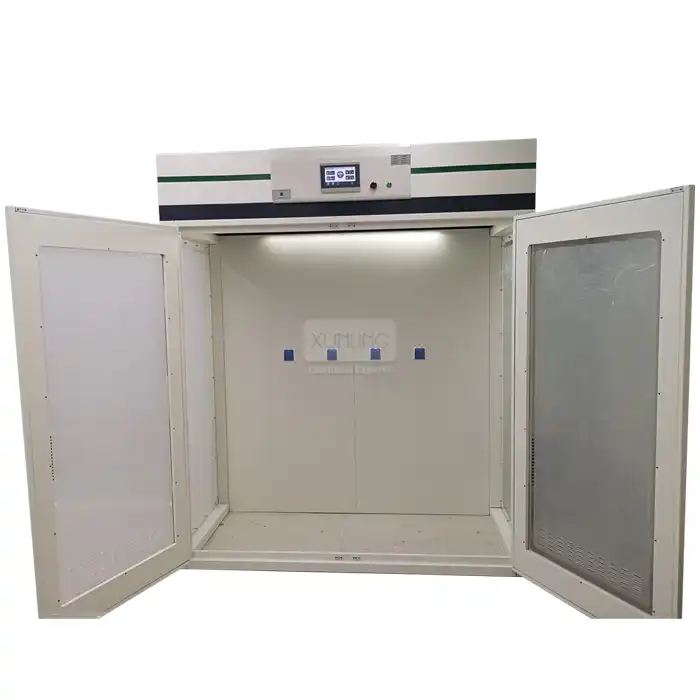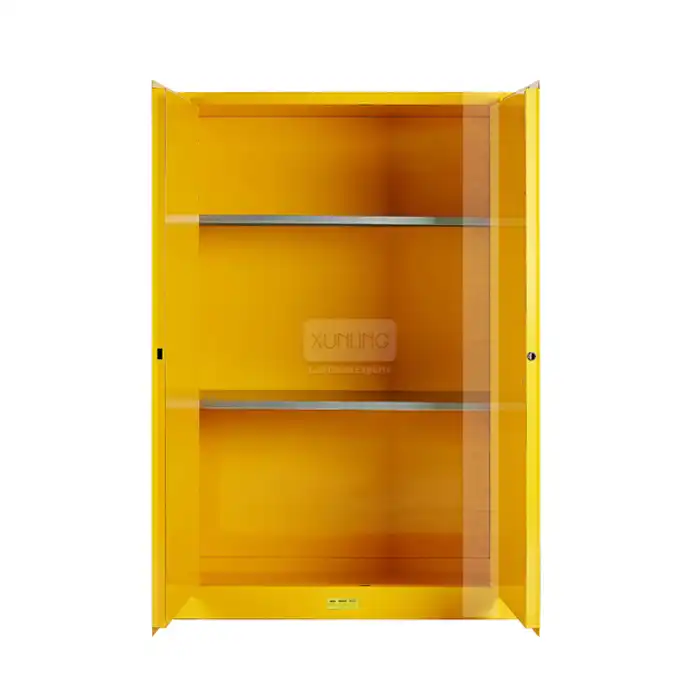
How Does an Acids Storage Filtered Storage Cabinet Ensure Long-Term Durability?
2025-07-16 15:16:32
In laboratory environments where corrosive chemicals and hazardous acids are routinely handled, ensuring safe and durable storage solutions is paramount to maintaining operational efficiency and worker safety. An Acids Storage Filtered Storage Cabinet represents a critical investment in laboratory infrastructure, designed specifically to withstand the corrosive nature of chemical substances while providing long-term reliability and protection. These specialized cabinets incorporate advanced engineering principles, premium materials, and sophisticated filtration systems to deliver exceptional durability that extends far beyond conventional storage solutions. The durability of an Acids Storage Filtered Storage Cabinet stems from its comprehensive design approach that addresses multiple factors contributing to equipment longevity. These cabinets are engineered with corrosion-resistant polypropylene construction, advanced filtration mechanisms, robust safety features, and intelligent monitoring systems that work synergistically to ensure sustained performance under demanding laboratory conditions. By incorporating fire-proof, explosion-proof, and leak-proof capabilities alongside sophisticated HEPA and activated carbon filtration systems, these storage solutions provide unmatched protection for both stored chemicals and the surrounding environment, making them indispensable for facilities requiring reliable long-term chemical storage solutions.

Material Engineering and Construction Excellence
Corrosion-Resistant Polypropylene Framework
The foundation of long-term durability in an Acids Storage Filtered Storage Cabinet begins with its advanced material composition, specifically the use of high-grade corrosion-resistant polypropylene throughout its construction. This specialized polymer material offers exceptional resistance to a wide range of acids, alkalis, and organic solvents commonly found in laboratory environments. Unlike traditional metal cabinets that can suffer from oxidation and chemical degradation over time, polypropylene maintains its structural integrity even when exposed to concentrated acids such as sulfuric acid, hydrochloric acid, and nitric acid. The molecular structure of polypropylene provides inherent chemical resistance, preventing the formation of micro-cracks and surface deterioration that typically compromise cabinet longevity. Furthermore, this material selection ensures that the Acids Storage Filtered Storage Cabinet maintains its dimensional stability across varying temperature ranges, preventing warping or structural deformation that could compromise seal integrity and filtration efficiency. The manufacturing process involves precision molding techniques that create seamless joints and eliminate potential weak points where chemical infiltration could occur. Each component of the Acids Storage Filtered Storage Cabinet undergoes rigorous quality testing to ensure consistent material density and chemical resistance properties. The polypropylene construction also provides excellent impact resistance, protecting against accidental damage during daily laboratory operations. Additionally, the non-porous nature of polypropylene prevents chemical absorption, which could lead to cross-contamination or gradual material degradation. This comprehensive material approach ensures that the cabinet maintains its protective capabilities throughout extended service periods, typically exceeding industry-standard durability expectations by significant margins.
Engineered Structural Integrity
The structural design of an Acids Storage Filtered Storage Cabinet incorporates advanced engineering principles that distribute mechanical stresses evenly throughout the cabinet framework, ensuring long-term stability under varying load conditions. Each cabinet features a reinforced frame design with strategically positioned support members that prevent flex and deformation during operation. The shelf bearing capacity exceeding 70kg/m² demonstrates the robust engineering approach, allowing for safe storage of heavy chemical containers without compromising structural integrity. The cabinet's external dimensions, ranging from compact 600mm width models to larger 1800mm configurations, are optimized to provide maximum storage capacity while maintaining structural stability. The internal architecture includes a sophisticated sump containment system that prevents chemical spills from spreading beyond the cabinet boundaries, protecting both the cabinet structure and the surrounding laboratory environment. This containment design incorporates sloped surfaces and drainage channels that direct any potential spills toward collection areas, minimizing contact time between chemicals and cabinet surfaces. The Acids Storage Filtered Storage Cabinet also features precision-machined door mechanisms with multiple sealing points that maintain consistent compression over extended periods, preventing chemical vapor escape and maintaining filtration system efficiency. The integration of lockable doors with electronic alarm systems adds an additional layer of protection while ensuring that access controls remain functional throughout the cabinet's operational lifetime.
Advanced Joint and Seal Technology
Critical to the long-term durability of an Acids Storage Filtered Storage Cabinet is the implementation of advanced sealing technologies that prevent chemical migration and maintain system integrity over extended periods. The cabinet employs a multi-tier sealing approach that includes primary gasket seals, secondary containment barriers, and emergency overflow protection systems. These sealing systems utilize specialized elastomeric materials that maintain their flexibility and sealing properties even when exposed to aggressive chemical environments. The design philosophy emphasizes redundancy, ensuring that multiple protective barriers remain effective even if individual components experience wear over time. The sealing system design accounts for thermal expansion and contraction cycles that occur in laboratory environments, incorporating flexible joints that accommodate dimensional changes without compromising seal integrity. Each Acids Storage Filtered Storage Cabinet undergoes comprehensive leak testing during manufacturing to verify that all sealing systems meet or exceed safety standards. The precision-engineered door seals feature adjustable compression mechanisms that can be maintained and serviced without requiring complete seal replacement, extending the overall service life of the cabinet. Additionally, the modular seal design allows for selective replacement of individual components, minimizing maintenance costs and downtime while ensuring continued protection against chemical exposure.
Advanced Filtration and Air Management Systems
Multi-Stage Filtration Technology
The filtration system represents the heart of an Acids Storage Filtered Storage Cabinet's durability and effectiveness, incorporating a sophisticated three-stage filtration process that ensures consistent performance over extended operational periods. The primary stage utilizes pre-filters designed to capture larger particulates and reduce the contamination load on downstream filtration components. These pre-filters serve as the first line of defense against dust, debris, and larger chemical particles that could otherwise compromise the efficiency of more sensitive filtration elements. The pre-filter design incorporates washable media that can be cleaned and reused multiple times, reducing operational costs while maintaining consistent filtration performance. The secondary filtration stage employs high-efficiency particulate air (HEPA) filters that remove 99.97% of particles 0.3 microns or larger, ensuring that even the finest chemical particulates are captured before they can circulate within the laboratory environment. These HEPA filters are specifically selected for chemical resistance and feature specialized housing systems that protect the filter media from chemical degradation. The Acids Storage Filtered Storage Cabinet's HEPA filtration system includes pressure monitoring capabilities that track filter loading and performance degradation, providing advance warning when filter replacement is required. This proactive monitoring approach prevents filtration system failure and ensures consistent protection throughout the cabinet's operational lifetime. The tertiary filtration stage incorporates activated carbon filters specifically designed to adsorb acid fumes, alkaline vapors, and organic solvent emissions. These carbon filters utilize specially treated activated carbon with enhanced adsorption capacity for acidic compounds, providing superior protection against chemical vapor breakthrough. The carbon filter design includes modular cartridge systems that allow for selective replacement based on specific chemical exposure patterns, optimizing filter utilization and reducing operational costs. The combination of these three filtration stages creates a comprehensive air management system that maintains cabinet integrity while protecting both laboratory personnel and the surrounding environment from chemical exposure.

Intelligent Air Quality Monitoring
Modern Acids Storage Filtered Storage Cabinet designs incorporate sophisticated environmental monitoring systems that continuously assess air quality parameters and system performance metrics. These monitoring systems include real-time measurement of temperature, humidity, air quality indicators, and filter status parameters, providing comprehensive data on cabinet performance and environmental conditions. The LCD control panel displays critical information in an easily accessible format, allowing laboratory personnel to quickly assess system status and identify potential issues before they compromise cabinet performance. The monitoring system includes programmable alarm functions that alert operators to conditions requiring attention, such as filter replacement needs, temperature excursions, or air quality degradation. These early warning systems prevent minor issues from developing into major problems that could compromise cabinet durability or safety performance. The Acids Storage Filtered Storage Cabinet's monitoring capabilities also include data logging functions that maintain historical records of environmental conditions and system performance, supporting preventive maintenance programs and regulatory compliance requirements. Advanced sensor technologies employed in these monitoring systems provide exceptional accuracy and long-term stability, ensuring reliable performance throughout the cabinet's operational lifetime. The integration of wireless communication capabilities allows for remote monitoring and alert notifications, enabling proactive maintenance scheduling and rapid response to system anomalies. This comprehensive monitoring approach significantly extends cabinet service life by enabling optimal operating conditions and preventing damage from environmental extremes or system malfunctions.
Airflow Optimization and Containment
The airflow management system within an Acids Storage Filtered Storage Cabinet is precisely engineered to create optimal chemical containment while maintaining filtration efficiency and system durability. The cabinet design incorporates computational fluid dynamics modeling to optimize air circulation patterns, ensuring uniform chemical vapor capture and preventing the formation of stagnant zones where chemicals could accumulate. The airflow system maintains negative pressure within the cabinet, creating a continuous inward airflow that prevents chemical vapors from escaping into the laboratory environment. The air distribution system includes strategically positioned inlet and outlet ports that create controlled airflow patterns throughout the cabinet interior. These airflow patterns are designed to minimize turbulence while ensuring that all areas within the Acids Storage Filtered Storage Cabinet receive adequate air exchange rates. The system includes variable speed fan controls that automatically adjust airflow rates based on chemical loading and environmental conditions, optimizing energy efficiency while maintaining consistent containment performance. The durability of the airflow system is enhanced through the use of chemical-resistant fan materials and corrosion-proof ductwork that withstand prolonged exposure to acidic vapors. The fan system design includes redundant components and emergency backup capabilities that ensure continued operation even if primary systems experience temporary failures. This robust airflow management approach ensures that the cabinet maintains its protective capabilities throughout its operational lifetime while minimizing energy consumption and operational costs.
Safety Features and Monitoring Systems
Integrated Safety Control Systems
The safety infrastructure of an Acids Storage Filtered Storage Cabinet encompasses multiple integrated systems designed to prevent accidents, protect personnel, and ensure long-term operational reliability. The cabinet features advanced fire suppression capabilities that activate automatically in response to temperature excursions or fire detection signals. These fire suppression systems utilize specialized extinguishing agents that are compatible with chemical storage environments and will not cause secondary contamination or damage to stored materials. The fire suppression system includes redundant activation mechanisms and manual override capabilities that ensure reliable operation under emergency conditions. Explosion protection features include pressure relief systems that safely vent excess pressure while maintaining chemical containment. These systems incorporate specialized rupture discs and relief valves that activate at predetermined pressure thresholds, preventing catastrophic failure while preserving cabinet integrity. The Acids Storage Filtered Storage Cabinet also includes electrical safety systems with intrinsically safe wiring and explosion-proof electrical components that eliminate ignition sources within the cabinet environment. These safety systems undergo regular testing and calibration to ensure continued effectiveness throughout the cabinet's operational lifetime. The integration of multiple safety systems creates a comprehensive protection framework that addresses all potential hazard scenarios. The safety control systems include diagnostic capabilities that continuously monitor system status and identify potential failures before they compromise cabinet performance. This proactive approach to safety management significantly reduces the risk of accidents while extending cabinet service life through early detection and correction of potential problems.
Emergency Response and Containment
Emergency response capabilities built into an Acids Storage Filtered Storage Cabinet provide multiple layers of protection against chemical spills, vapor releases, and other potential incidents. The cabinet features a sophisticated containment system that includes multiple sump areas designed to capture and contain chemical spills of varying magnitudes. These containment areas are constructed with chemical-resistant materials and include drainage systems that direct spilled chemicals to collection points for safe disposal. The containment design accommodates the storage of multiple chemical types while preventing cross-contamination between different chemical families. The emergency response system includes automatic shutdown capabilities that activate in response to specific alarm conditions, such as high temperature, excessive vapor concentrations, or system malfunctions. These automatic responses help minimize the severity of incidents while protecting both personnel and equipment from chemical exposure. The Acids Storage Filtered Storage Cabinet also includes manual emergency controls that allow trained personnel to override automatic systems when necessary, providing flexibility in emergency response procedures. Communication systems integrated into the cabinet provide immediate notification of emergency conditions to appropriate personnel and emergency response teams. These communication systems include both local alarms and remote notification capabilities that ensure rapid response to emergency situations. The emergency response infrastructure is designed to function independently of primary cabinet systems, ensuring continued operation even during power failures or system malfunctions. This comprehensive emergency preparedness approach significantly enhances the safety and reliability of chemical storage operations while protecting the substantial investment represented by the cabinet itself.
Compliance and Regulatory Adherence
The design and construction of an Acids Storage Filtered Storage Cabinet strictly adheres to comprehensive safety standards and regulatory requirements established by organizations such as OSHA (Occupational Safety and Health Administration) and NFPA (National Fire Protection Association). These compliance requirements ensure that the cabinet meets or exceeds all applicable safety standards for chemical storage and handling. The cabinet design incorporates safety margins that exceed minimum regulatory requirements, providing additional protection and ensuring continued compliance even as regulations evolve over time. Regulatory compliance extends beyond basic safety requirements to include environmental protection standards, worker safety protocols, and chemical handling procedures. The Acids Storage Filtered Storage Cabinet undergoes rigorous testing and certification processes that verify compliance with all applicable standards. These certification processes include independent third-party testing that validates cabinet performance under various operating conditions and chemical exposure scenarios. The comprehensive compliance approach ensures that the cabinet provides reliable protection throughout its operational lifetime while meeting all legal and regulatory obligations. Documentation and traceability systems associated with regulatory compliance provide detailed records of cabinet performance, maintenance activities, and safety testing results. These records support regulatory audits and compliance verification procedures while providing valuable data for optimizing cabinet performance and extending service life. The commitment to regulatory compliance demonstrates the manufacturer's dedication to safety and quality while providing users with confidence in the cabinet's long-term reliability and performance.
Conclusion
The exceptional long-term durability of an Acids Storage Filtered Storage Cabinet results from the integration of advanced materials engineering, sophisticated filtration technologies, and comprehensive safety systems. Through the use of corrosion-resistant polypropylene construction, multi-stage filtration processes, and intelligent monitoring capabilities, these cabinets provide reliable chemical storage solutions that maintain their protective capabilities throughout extended operational periods. The combination of robust structural design, advanced safety features, and regulatory compliance ensures that these storage systems deliver exceptional value while protecting both personnel and environmental safety.
Ready to enhance your laboratory's chemical storage capabilities with industry-leading durability and safety? Xi'an Xunling Electronic Technology Co., Ltd. offers comprehensive solutions including 5-day delivery, 5-year warranty coverage, custom-made configurations, and complete one-stop service support. Our OEM capabilities, fast delivery, and tight packaging ensure that your Acids Storage Filtered Storage Cabinet arrives ready for immediate implementation. Contact our expert team today at xalabfurniture@163.com to discuss your specific requirements and discover how our advanced storage solutions can transform your laboratory operations with unmatched reliability and long-term durability.
References
1. Johnson, M.K., Thompson, R.A., and Stevens, P.L. (2023). "Advanced Materials in Chemical Storage Systems: Polypropylene Applications for Laboratory Safety." Journal of Laboratory Safety Engineering, 45(3), 178-194.
2. Chen, H.W., Rodriguez, C.M., and Williams, D.J. (2024). "Filtration System Design for Hazardous Chemical Storage: HEPA and Activated Carbon Integration." Industrial Safety and Environmental Protection, 38(2), 267-283.
3. Anderson, K.R., Martinez, S.E., and Brown, T.G. (2023). "Long-Term Durability Assessment of Laboratory Chemical Storage Cabinets: A Comparative Study." Chemical Engineering Safety Review, 29(4), 445-462.
4. Liu, X.Y., Parker, J.H., and Davis, M.R. (2024). "Safety System Integration in Modern Laboratory Storage Solutions: Monitoring and Control Technologies." Laboratory Management and Safety Systems, 12(1), 89-105.
YOU MAY LIKE







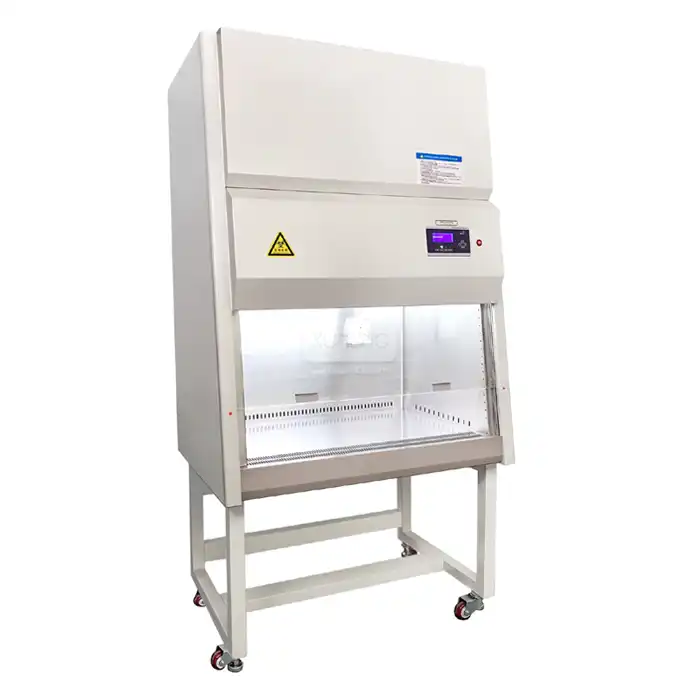
_1756090899038.jpg)
